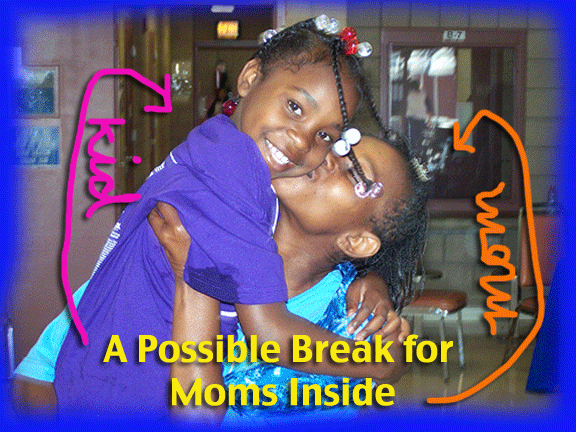
On Monday of this week, the California Department of Corrections announced that up to 4000 of the mothers or mothers-to-be housed in our state prisons could begin serving the rest of their sentences back back in their home communities through electronic monitoring.
The only women who are eligible to apply for this Alternative Custody Program as it is called, or ACP, are those who are have not been convicted of a violent crime, are non-sex offenders, and “non-serious” offenders—plus they can’t have any of a list of possible other negative marks on their records. AND they need to have only two years or less remaining on their sentences.
The program is also only open to women who were the “primary caregivers” for their kids before they got locked up, or who are now pregnant.
In order for a female inmate to qualify for the Alternative Custody Program there must be a spot available in a qualifying facility or program in the woman’s home community—a drug rehab, or transitional housing, anger management classes—where she can receive the necessary help to aid her in adjusting to life on the outside.
CDCR spokeswoman Dana Toyama told the AP’s Don Thompson that case managers will determine if qualified inmates have family support, a suitable home and transportation, and are enrolled in drug rehabilitation, anger management or other programs.””It’s not like we’re just putting them out in the community and saying good luck.”
The announcement is in response to a bill passed last September and signed into law by then Governor Arnold Schwarzenegger, which was designed to address the damaging effects that the incarceration of a parent has on a kid.
With all the incarceration madness of the last 30 years that has led our national incarceration rate to surpass that of every other country in the world, until recently there has been little talk of the collateral effect that so much imprisoning has had on families and communities—and especially on children.
One out of every 27 children in America has a parent who is incarcerated. Statistically, after a parent is locked up kids tend to do less well in school, tend toward depression, anxiety and other emotional problems. They are more likely to get pregnant if a girl, more likely to be into gangs or drugs.
When the parent in prison is the mother—as she is usually the primary caregiver—the kids reactions become more extreme.
(You can find a couple of the reports regarding the affects of the incarceration on kids here and here.)
When the news of the impending release program was announced on Monday, plenty of prosecutor types and spokespersons for crime victims organizations came forward to tell reporters how appalled they were at the prospect of these criminal mothers suddenly running ankle-braceleted through the countryside.
For instance there was Harriet Salarno, founder of Sacramento-based Crime Victims United, who told Jack Dolan of the LA Times,“If they were such great mothers to begin with, they never would have committed the heinous crime that got them sent to state prison,” “In many cases, the children might be better off in foster care,” Dolan wrote that Salarno said in her infinite wisdom.
And what are those “heinous crimes” exactly?” Well, I’m glad you asked.
According to the most recent CDCR figures there are 9484 women in California state prisons:
Of those incarcerated women, around 792 are in for simple drug possession.
Another 793 are locked up for possession with the intent to sell.
409 are inside for straight out drug sales.
Apart from drug crimes, 569 women were convicted of petty theft with a prior. (In other words, they only stole something expensive enough to qualify for a misdemeanor, but since they had a previous conviction for shop-lifting or the like, the misdemeanor was bumped up to a felony.)
254 women are doing time for receiving stolen goods.
618 are in for forgery or fraud.
And, yes, it is precisely some of those drug possessing or petty thieving, or stolen goods-receiving mothers (or even some of the forgers) who might qualify to spend the rest of their prison sentences being monitored at home with their kids.
As a result, the state will save money, the California prison population will be a reduced a little, the women may be less likely to return to prison due to the deepened bonds with kids and family, and perhaps their kids will grow up with a lower likelihood of going to prison themselves because their moms have come home.
In short—despite the usual law-and-order hysteria—it sounds like a program worth trying.
AND SPEAKING OF KIDS: LAUSD JUST ENGAGED IN ANOTHER ROUND OF SLASHING AND BURNING ITS LIBRARY PROGRAMS
Steve Lopez has the story in the LA Times. It’s re-e–eally depressing.
NOTE: The photo above is of a mother and daughter who were brought together for Mother’s Day in 2010 by the Get On the Bus program that transports kids to prisons on Mother’s and/or Father’s Day to see their incarcerated parents. Statistically most incarcerated mothers are not visited by their children as the trips to the rural locations of California’s women’s’ prisons are regulation-fraught, expensive and time consuming. Thus most often they just don’t happen.
NOTE 2: DANGEROUS JAILS PART 1, COMING THURSDAY

This is a very good start and one, I am certain, will be successful and lead the way for similar programs.